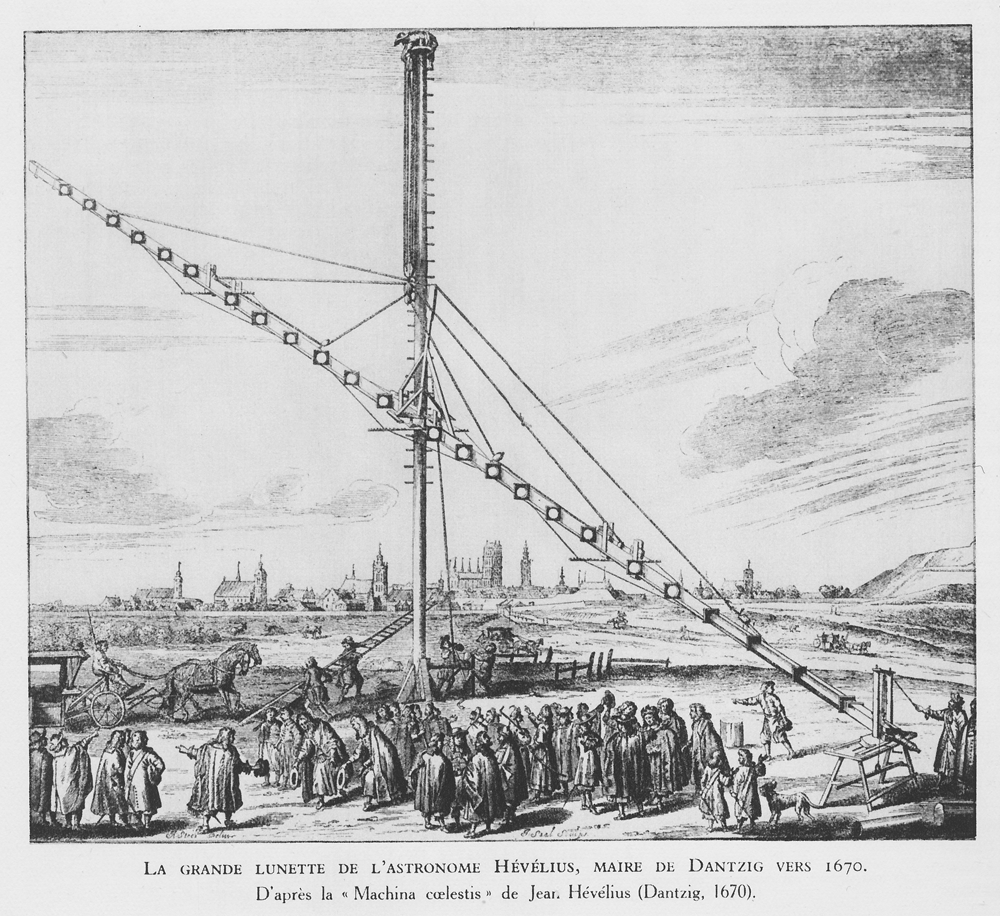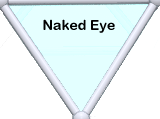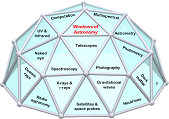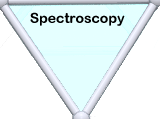Windows of Astronomy |
|
TelescopesGiven the dire state of naked eye astronomy, the telescope deserves all the praise it is given. Yes, there were instruments before the telescope. Some were finely made and allowed positional measurements to be recorded to better than one tenth of a degree. Among the notable instruments were Arabic astrolabes, mural circles and variants of the quadrant and celestial globe. The observations of the great astronomer Tycho Brahe were all taken before the invention of the telescope. They allowed more precise models of the motions of the planets to be invented but they didn’t tell his contemporaries or immediate successors anything more about what planets or stars were. Even the simplest telescopes made an immediate impact. In the early 1600s, Galileo famously wrote about the myriad of stars fainter than naked eye vision could detect, about the Moons of Jupiter, sunspots and the changing phases of Venus. This was real evidence, not speculation. In the following century Robert Burns famously used the line: facts are chiels that winna ding. He wasn’t talking about astronomy but simply emphasising that there is no escaping evidence. Any understanding of what is out there must be based on evidence. Galileo’s evidence was a crushing blow for astronomy by assertion. As his life story showed, the old guard generally took their ideas to the grave. For at least the first century of telescopic astronomy, the instruments themselves were optically imperfect and mechanically flimsy. Nonetheless, the genie was out of the bottle. Less than perfect was hugely better than nothing. The Moon was mapped in some detail, Mars seen to have polar caps, the great spot of Jupiter followed, Saturn found to have moons and rings, comets understood to be in the realm of planets, not the high atmosphere. The first detailed star charts were drawn up and double stars recognised, even though not at that time appreciated to be binary systems. By two hundred years after Galileo, the realisation had dawned that telescope optics need to be mounted within precision mechanics. One of the early discoveries with the new breed of precision instrument was the finding of the first asteroid by Piazzi in Sicily at the start of the nineteenth century. This was Ceres, now deemed large enough to be a dwarf planet. Greater changes were to come. A second realisation that took hold in the nineteenth century was that to see further one needed a wider telescope to collect more light, not one with greater magnification. The technology of making larger glass lenses improved a lot but refracting telescopes reached their technological limit in the second half of the century at about 1 metre diameter. From then on, larger telescopes meant reflecting telescopes.
|
|
 |
 21st century instrument. One of four 8.2 m telescopes at Paranal, Chile. Courtesy ESO. |
17th century telescopes varied from short and small to long and unwieldy |
|
Seeing more stars meant seeing further. Did the supply of stars ever run out? Apparently not in the nineteenth century. So, was the universe infinite or in some way localised? Seeing more also meant seeing that not everything out there is a star. Messier had charted about a hundred fuzzy objects in the late 18th century. How did these fit into the scheme of things? Were they truly fuzzy objects like giant gas clouds or simply tight clusters of stars like a swarm of bees seen in the distance? Answering this question also drove the quest for ‘more light’. Did the universe at large have structure? Just how far away are the stars in any case? Whatever the answers, they would be provided by evidence, not rhetoric. Bessel began an answer by being the first to measure the distance to one of the nearest stars using the precision astrometric tools of the 1830s. The nearest stars are over 250 thousand times as distant as the Sun, itself 150 million km away. That is only the first rung on a distance ladder whose length would not be well established for a further century and half. Of course we are still in the telescope age and this instrument is as important as ever in astronomy. Twenty-first century telescopes are as different from their nineteenth century predecessors as those were from 17th century versions. New observatories being equipped today can expect 8 – 10 metre diameter instruments with computer controlled positioning, image correction and digital image detection. They will also have adaptive optics to sharpen small field images and active optics to compensate for objective mirror distortion as the orientation of the telescope is changed. The instruments may well be operated from consoles thousands of kilometres away, though there will be on-site technicians. Even amateurs now expect computer controlled positioning and digital image processing. A few telescopes over 20 metres diameter will see their first light in the 2020s. Discoveries made with the telescope today are not made with an eyeball peering closely through a brass-mounted eyepiece. What singles out a modern instrument is the specialist equipment that is planned with it, specialist equipment that opens new windows. Three of the most important windows are those of spectroscopy, photography and photometry, all of which were introduced in the 19th century. |
|


